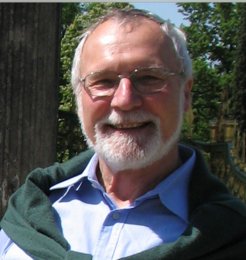Appreciation for Werner Keune
The Mössbauer Spectroscopy community has lost one of its prominent and well-recognized scientists, Prof. Dr. Werner Keune, on March 27, 2021, in Germany, after a long battle with cancer.

Werner Keune started his Mossbauer Spectroscopy career at the Technical University of Munich, Germany in 1965, carrying out his Master thesis (German diploma) under the direction of Professors Heinz Maier-Leibnitz and Werner Schmat. He continued his education at the TU Munich by joining the group of Prof. Edgar Lüscher in 1966. In 1967, he moved to the United States to work in Dr. Uli Gonser’s laboratory in California. There, Werner Keune developed a taste for measuring lattice dynamics parameters using the Mössbauer effect, a taste he never lost throughout his illustrious career. After completing his PhD thesis in 1969, while being examined by Prof. Mössbauer himself, he moved to the University of Saarland at the same time as Prof. Uli Gonser. At Saarbrücken, Werner picked up the work on thermoelectric materials. After his habilitation in 1975, he moved to Duisburg as a full professor. There he established a Mössbauer spectroscopy laboratory that remains active to this date. Being a scientist with a world vision, Werner took every opportunity to interact with scientists all over the world, leaving now deeply saddened friends in Germany, Japan, Brazil, France, Romania, India, and the United States.
After getting the taste of California as a student, Werner returned to the California Institute of Technology to work with Prof. Brent Fultz in 1991, where he collaborated on a project to build a Mössbauer diffractometer with a position-sensitive detector. The first measurements barely saw diffraction peaks above background, but Werner kept up the enthusiasm and remained engaged after he returned to Germany. He later went to Argonne National Laboratory to work with Dr. Samuel Bader in 1996. While at Argonne, Werner Keune became familiar with the Nuclear Resonance Scattering group at the Advanced Photon Source, and decided to gear his research program to exploit the possibility of measuring phonon density of states. This collaboration resulted in 25 research papers over a 25 years period. Among the highlights of his work at Argonne, we can recall measurements of lattice dynamics parameters and phonon density of states of thin films, superlattices, isolated nanoclusters, isotopically labeled multilayers, nanocatalysts, and thermoelectric materials. It was through these publications that we learned about phonon confinement, and the role of phonons in thermoelectric and Invar effects. It was almost reincarnation of his early research topics with the enhanced capabilities offered by synchrotron radiation. Werner was an enthusiastic experimental physicist who enjoyed doing hands-on research as illustrated by the fact that he joined nearly every synchrotron beamtime that his group has ever participated in USA or Japan. During those times, one could share his love for science and also his dedication to the transfer of his extensive knowledge to the new generation. Werner Keune always brought with him several bright young students and postdoctoral researchers, along with extremely well prepared and meticulously characterized samples. He used to plan every minute of the experiment ahead of time, so it was a real pleasure to work with him at a synchrotron beamline.
Werner was equally dedicated and consistent with data analysis and publication. He worked on every manuscript in detail, and he had no qualms about delaying a publication until everything was in order to his taste and very high standards. Our last two papers together (EEA) were in 2020, vibrational properties of thin films of iron with insulating layers, and the role of hydrogen in the thermoelectric behavior. At the time of his passing, he was working yet on another manuscript, and complained that that it wasn’t going fast enough.
Werner Keune, through his students and collaborators kept strong connections with the University of Central Florida (Orlando, USA), Ruhr-University Bochum (Germany) and the Fritz-Haber Institute (Berlin) in his later years.
As one of his PhD students (BRC), I can still remember getting lost with him while running around Argonne National Laboratory because we were discussing the latest data measured overnight and lost track of time and of how many turns around the laboratory we had done. With age, Werner’s positive spirit and engagement in science did not fade, he kept doing his shifts at the beamline with his students, and was only thankful when he was not scheduled overnight. Werner was a humble person with a heart of gold.
We have no words to express the pain that this loss has caused us and everyone else who ever interacted with Werner. He will be missed by his friends and colleagues dearly. We will miss his smile, his energy and motivation, and his humanity. He leaves behind a wonderful family of whom he was very proud. His beloved wife Ingeborg and his children Tine and Philipp and grandchildren.
Prof. Beatriz Roldán Cuenya
Director of the Department of Interface Science
Fritz Haber Institute
Berlin, Germany
Dr. Esen Ercan Alp
Argonne Distinguished Fellow
Argonne National Laboratory,
Argonne, Illinois, USA
Prof. Brent Fultz
California Institute of Technology,
Pasadena, California, USA












